The Owl Nestbox project has been operating for 10 months and has reached the stage when it is possible to draw preliminary results. During this time, the team of the Man and Creation program has installed artificial nestboxes for the barn owl, a species of owl which is in the Red Book of Belarus, on 9 Orthodox churches and 11 Catholic churches (or on bell towers) in the Hrodna and Brest dioceses. Already this spring, the houses can be populated by owls.
Read here how the church is connected with the preservation of owls and how man and an owl can be useful to each other, and also how the Owl Nestbox project will develop further.
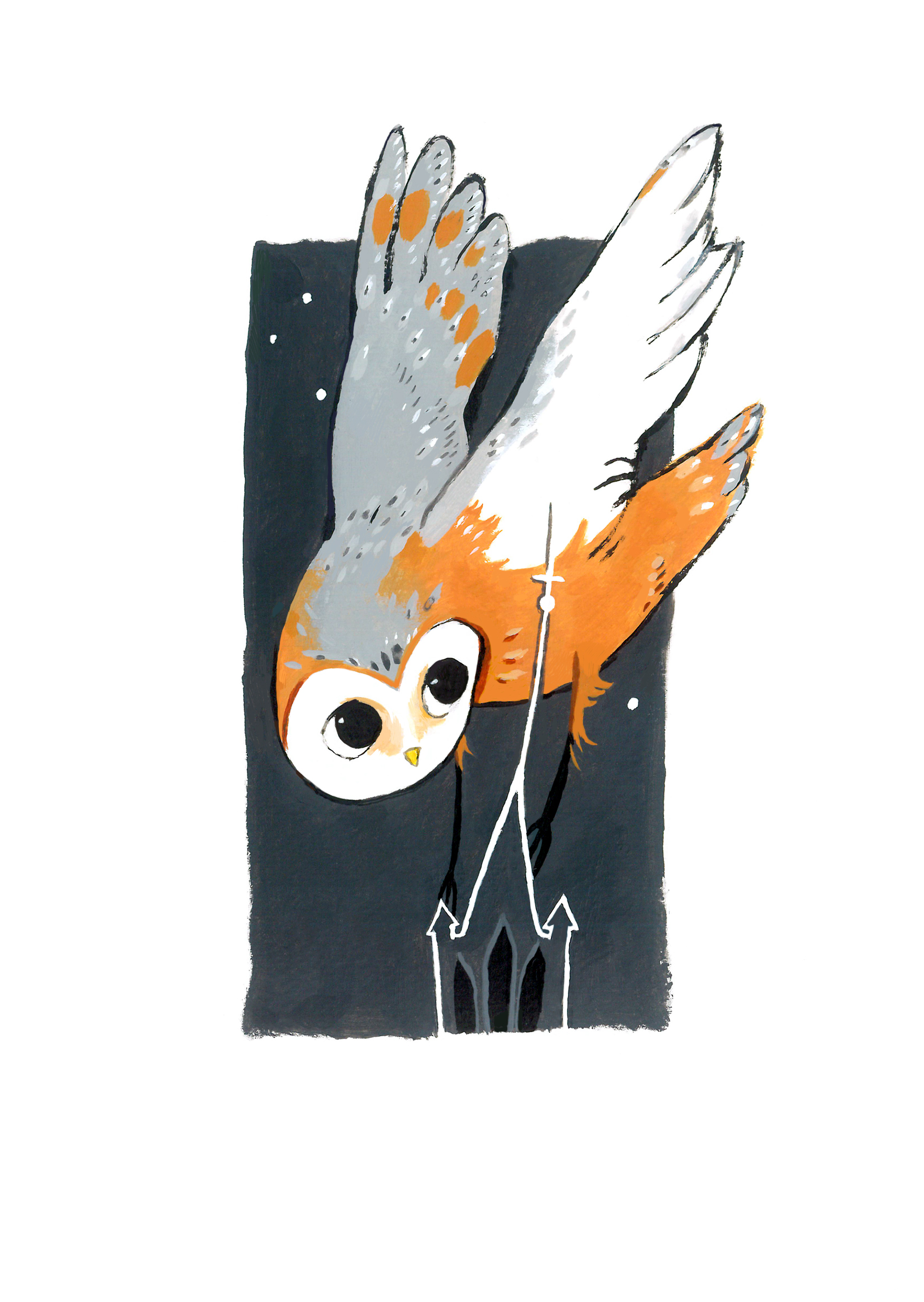
Maybe some nestboxes have already been occupied by owls?
Nestboxes began to appear only in the spring last year, just at this time the owl is looking for a home. This means that it is possible to hope that a bird will be interested in a new home only in the next season. That is, this spring barn owl can already settle there.
This summer, the Man and Creation team will begin monitoring the installed nestboxes. However, even if the nestboxes are empty, it is too early to estimate the result. Denis Kitel, an ornithologist, gives the following example: the great gray owl found a platform built for the bird in 2006, six years later. So the Owl Nestbox project is a long-term one. As Denis notes, in all countries (in Poland, the Czech Republic, England), where such biotechnology was used, the number has grown. The ornithologist will check nestboxes once every 2-3 years, clean and repair them if necessary.
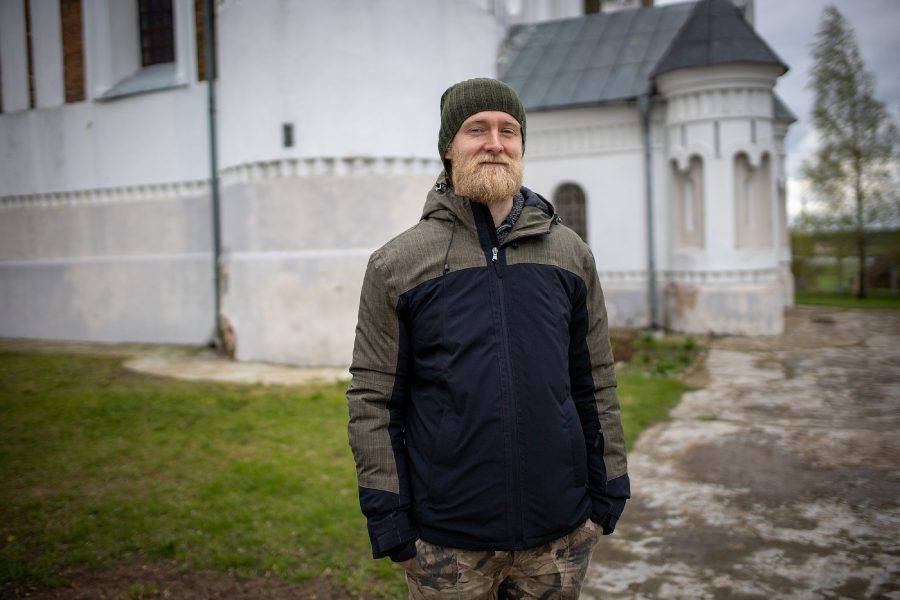
Can parishioners who do not have special birdwatching skills notice that an owl has taken up residence in a nestbox on their church?
Barn owl is a secretive bird. Its nestbox is not visible from the ground. But you can guess about its presence. The owl is a night hunter, and it will fly out of the nest in the evening. The bird is not afraid of light and can easily fly in the light of lanterns. In the spring, like all birds, a barn owl has a mating season, so you can hear it singing.
20 nestboxes – is it a lot or a little?
“In Poland, hundreds of nestboxes were installed as part of similar projects. At the moment, they have artificial nests in more than a thousand churches,” Denis Kitel gives an example. “On the other hand, we don’t have many suitable places. The natural habitat of the barn owl covers the whole of Poland, while in our country it is only the extreme west of the country. This is the border of the habitat, on the border there are always fewer birds than in the central part of the habitat. Owl Nestbox is a project with a future perspective.
At the moment, one pair of barn owls is reliably known in Belarus. But traces of owls are constantly found in different regions, for example, just recently – in the Stolin district. These can be single young birds, not pairs, it is not a fact that they will stay with us.
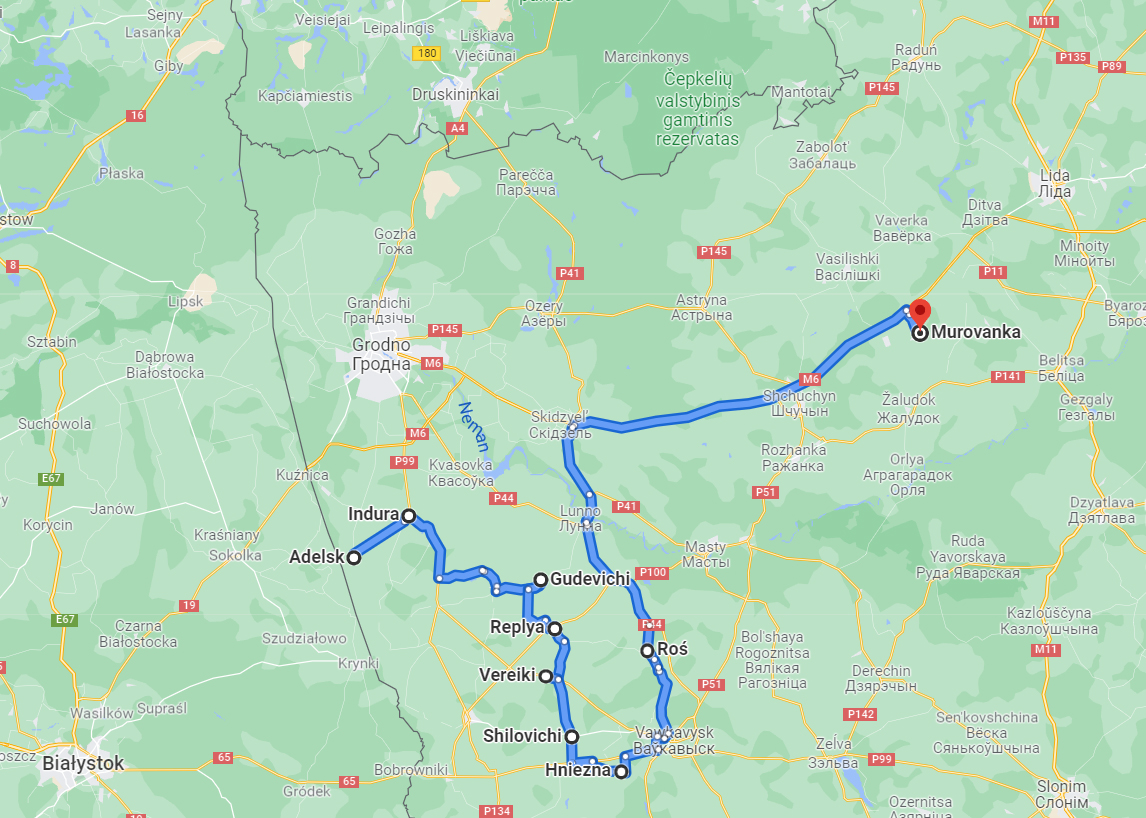
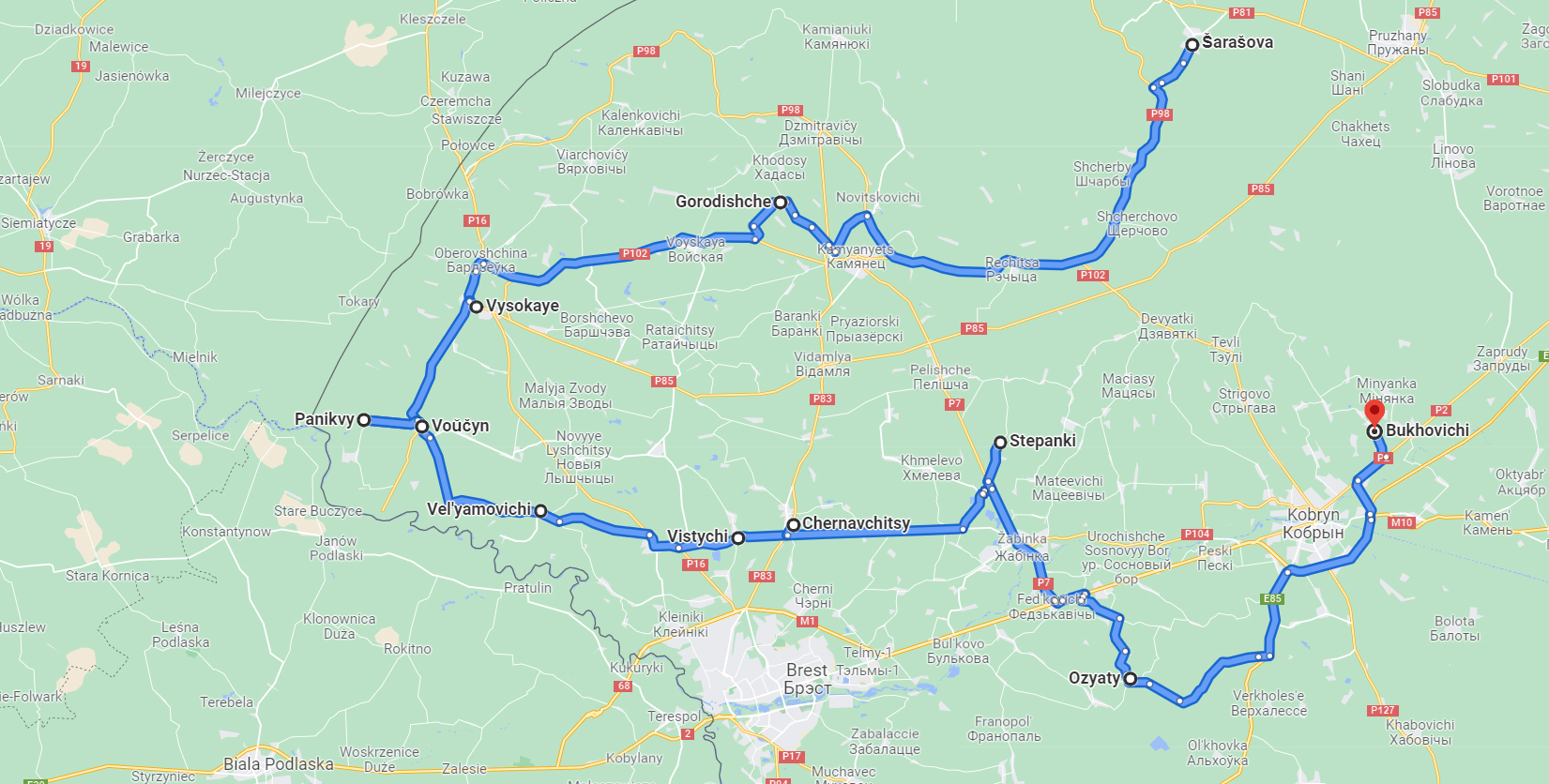
Maybe barn owls are not typical for Belarus?
“The barn owl has always lived with us,” Denis says, “and 50 years ago it was spread much further: nesting sites were found even in the Žytkavičy, Navahrudak districts, which, in fact, is central Belarus. Then there was a series of rather severe winters – and a strong decline in numbers. The barn owl can return to its places, but in order to further conquer the east, it needs a stronger population in the west.
The ornithologist picked up a dozen more churches in the west of Belarus that the barn owl might like. It remains to check each one personally: is there free access to the attic or belfry, is it possible to cut a nestbox into a window opening by cutting out a piece of blinds or removing glass. Perhaps the barn owl will get a few more houses. Then the project will be paused – the stage of waiting and monitoring will come. If the owl populates nestboxes, it will be possible to think about expanding inland.
Why churches?
Because the barn owl prefers buildings that stand out in the countryside. Most often these are churches and bell towers. Loud sounds do not bother the owl. People will not interfere with it, since visitors to the attic are rare. The barn owl may also like it on the farm. If the attic or belfry is open, this place will never remain uninhabited. If owls do not occupy it, then bats and pigeons will, Denis Kitel often met traces of martens.
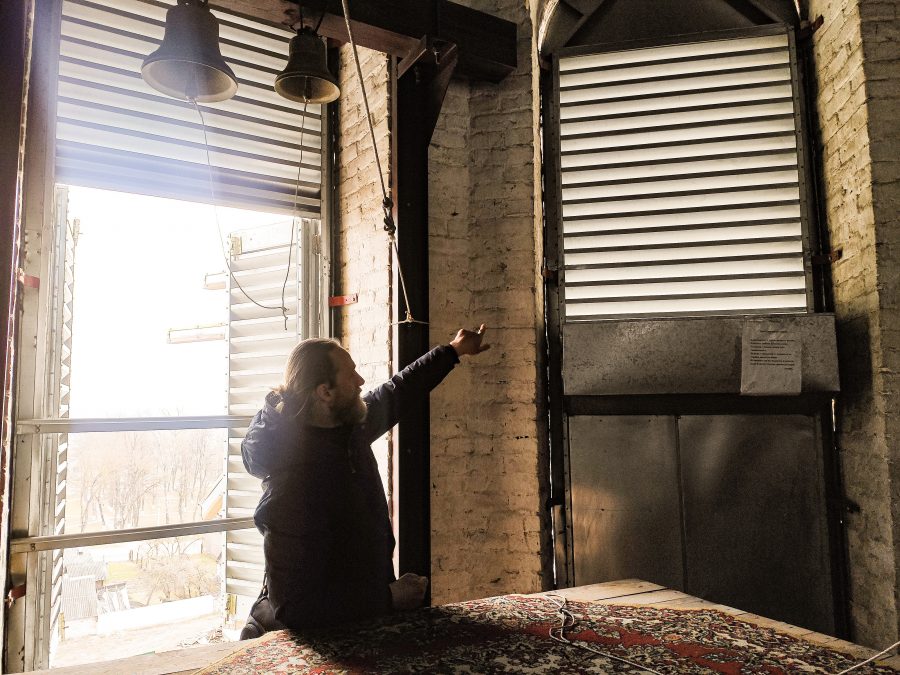
“When we arrived and talked with orthodox and catholic priests, with local residents, they told us that owls lived there before the repair of some churches. The big problem that we face is the fashion to board up all the holes during the reconstruction. At the moment any church is an impregnable fortress for any representative of the fauna,” the ornithologist complains. “This means that it is also impossible to construct a house for an owl there. The priests do not want the pigeons to fly there in the first place, of course, they leave a lot of garbage after themselves. However, we must start with the fact that there are no harmful animals. It is people themselves who come up with an idea what is harmful and what is useful in relation to themselves. Even if you look from the point of view of people, a bat is also a useful animal for us, it will catch cockchafers that eat gardens, night butterflies that leave caterpillars on crops that then do not bear fruit. There is such a rule: the greater the biodiversity, the more stable the ecosystem and the better it functions. The places where a person settles are all changed landscapes. When man expands their territory, we are faced with the problem that there is no place for birds to nest. For example, in the Czech Republic there were such cases: an owl settled in vertical metal pipes, and the chicks, growing up, but not yet learning to fly, simply could not leave them and died of hunger. An ecological trap built by man. Therefore, in essence, the Owl Nestbox project is an attempt to compensate for human intervention in nature.
What does an owl nestbox look like?
This is a small box 80x40x50 cm made of wood chip boards. A partition is installed inside, which creates a shade for the lover of secluded places and an additional sense of security. The inside is filled with dust (fallen leaves). In addition to the flight hole for the bird, there is a door at the back, through which the ornithologist will check whether the owl has settled in the box, and also clean the box, if necessary. The nestbox is often installed so that access is only to it, but not to the belfry or the attic of the church.
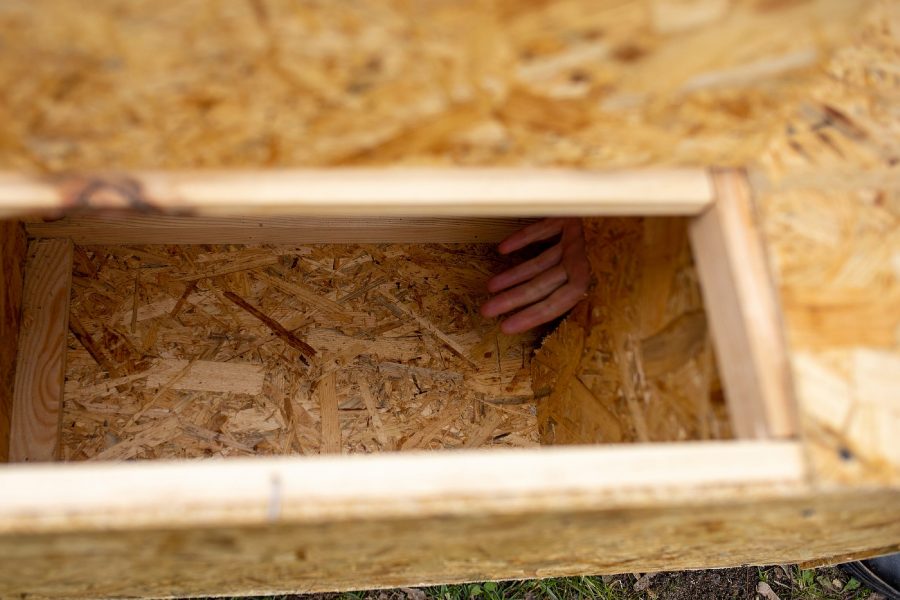
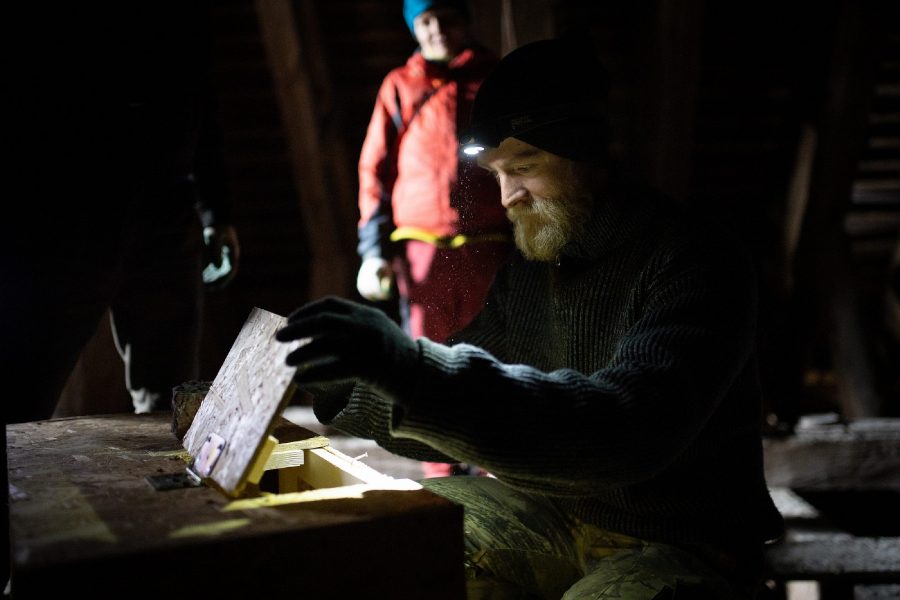
The nestbox was made specifically for the barn owl, but in principle it may appeal to the jackdaw or the little owl, although it will turn out to be too big, but so far they have not been seen in owl houses.
Next to each church where an artificial nestbox is installed, there is a sign that briefly tells about the barn owl. This is one of the steps –Owl Nestbox project educational one – that works for the protection of the species.
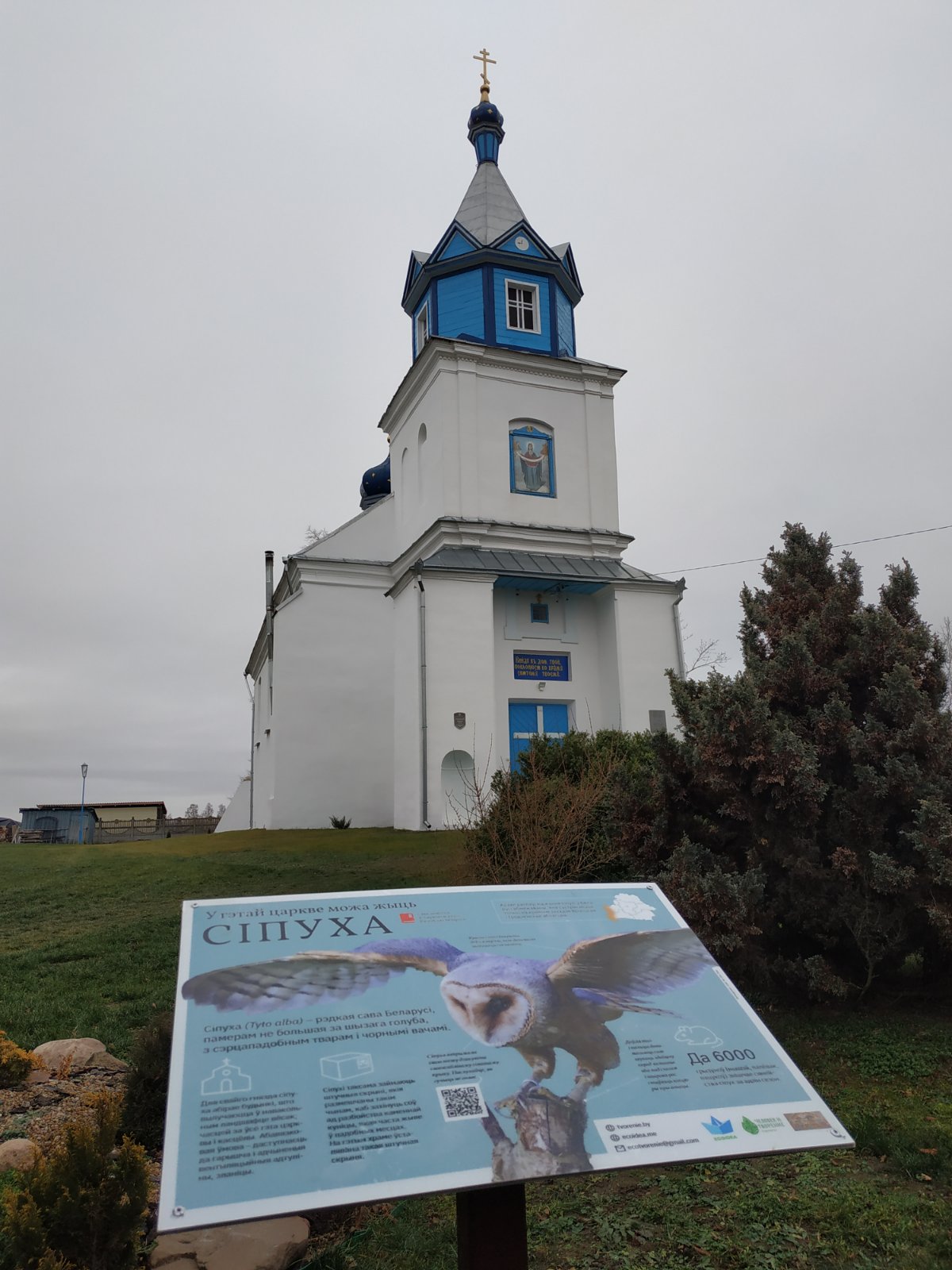
What other protective measures can be taken?
“Not everything depends on us here,” explains Denis Kitel. “Even in Europe, where this species is relatively common, it has problems, in addition to boarded up windows in buildings, the use of pesticides in the fields, continuous plowing of land. In Belarus, a bad option for this owl is fields from horizon to horizon, sown with monoculture. There is more private property in Europe, people themselves decide how to sow their small plots of land – this is how a mosaic of landscapes is created. There is such a problem: the fields are plowed up by the local collective farm every year and sown with corn, which grows tall, and the owl cannot hunt there. It would be good if there were pastures and hayfields around the villages, where owls can feed their offspring.
What was the attitude of the parishes to the project?
Priests treated the Owl Nestbox project in different ways. Half of them were immediately open to the initiative, they were also interested in other joint projects. Half, frankly, were prejudiced against owls. The key to dialogue and success was the curiosity of the priest, the desire to delve into the problem.
“Plus, for some reason, some people have a negative attitude towards owls. That an owl is a dark force. Although this, of course, has nothing to do with the Christian religion. There are worries that the owl is a hunter, a killer. But this is in our understanding. In nature, everything is based on the fact that someone has to catch and eat someone.
Another concern that priests have is that the owl will produce too much garbage. If the owl lived on an open belfry, then droppings and food debris would fall on the open surface. So, they remain in the nestbox.
How else can the church take care of nature?
The Owl Nestbox project is actually wider than an attempt to preserve the Red Book species, and here’s why:
“It was important for us that many parishes were open to accept the presene these nestboxes. It was important for us to feel how the priests themselves relate to this kind of activity,” explains Sergey Yushkevich, the head of the Man and Creation program. “On the one hand, there was a goal to preserve biodiversity, on the other hand, to work with church communities, to give them such a simple understanding of what can be done for the environment. Because it is the simplest thing for them to agree to put up a nestbox. No one discussed the issue of the coexistence of nature and churches, which we tried to mention.
Through their travels to find a home for the owl, the Man and Creation program has identified a number of other topics that they would like to work on. Particularly bats. We are most often skeptical about them, and these animals scare some people. However, in Europe, bats are protected, by the way, there is a practice of constructing nestboxes for them, like nesting places for owls. Educational work will help to form the correct – careful, sympathetic – attitude towards them.
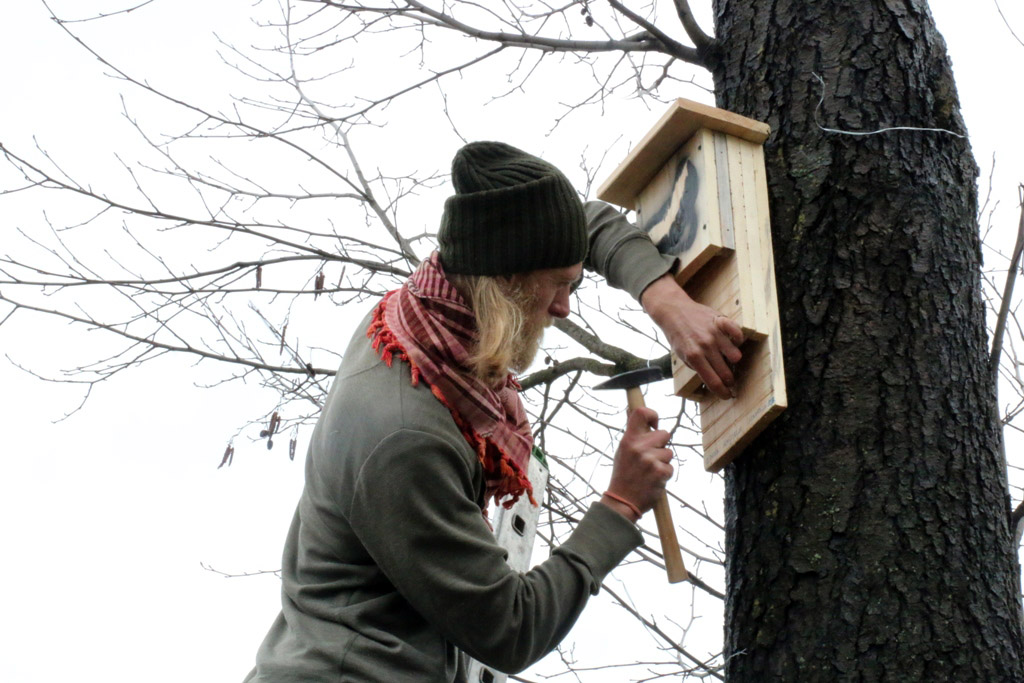
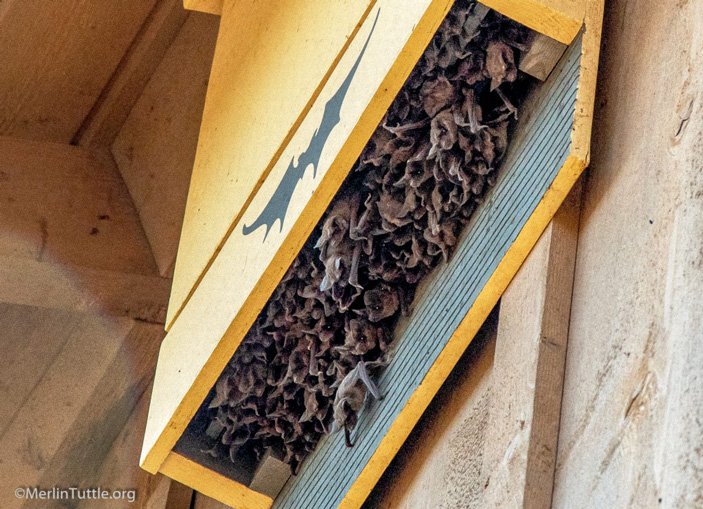
There are a number of simple and effective eco-initiatives that parishes may be interested in. For example, houses for insects on the territory of the church. They, unlike the barn owl nestbox, invisible to the eye, are a clear example of caring for God’s creation. Any bird nestboxes will be useful. In Europe, the so-called gardens of Francis of Assisi are popular. To create one, you need to plant flowering plants of this climatic zone so that flowering does not stop from spring to late autumn. This decoration project supports insect biodiversity.
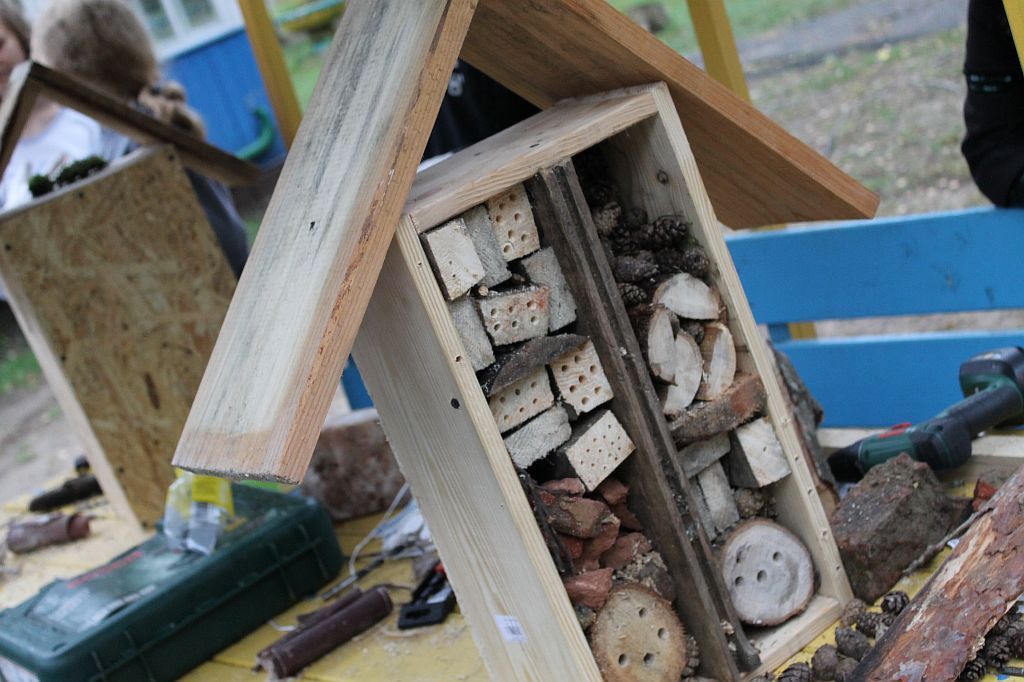
“For example, in Europe there is a big problem with pesticides, and even for ordinary insects, they have conservation work carried out so that bees, bumblebees, butterflies have places where they can feed safely. This is an important ecosystem approach: if there are no such lawns, no insects – voles will not be able to eat, and barn owls will not be able to eat them. You can build a chain that is quite long,” explains Denis Kitel.
The ornithologist is sure that the church only benefits from various eco-initiatives.
“For those people who come there, it is probably important to see that the church, in addition to saving souls, also deals with environmental problems, that more good things are done in the church.”
Alexandra Kaptsevich
